Now that you’re ready to try your first ride in the water, there must be a thousands of question in your mind, right? Today we’re focusing on the difference between inflatable and hard paddle board. Each of these boards is great in some ways that depends on how you intend to use it. Let’s explore the differences and pick the best one for you.
We will explain the basic differences of inflatable paddle board vs hard boards to help in your decision.
Basic Differences Between Inflatable and Hard Paddle Boards
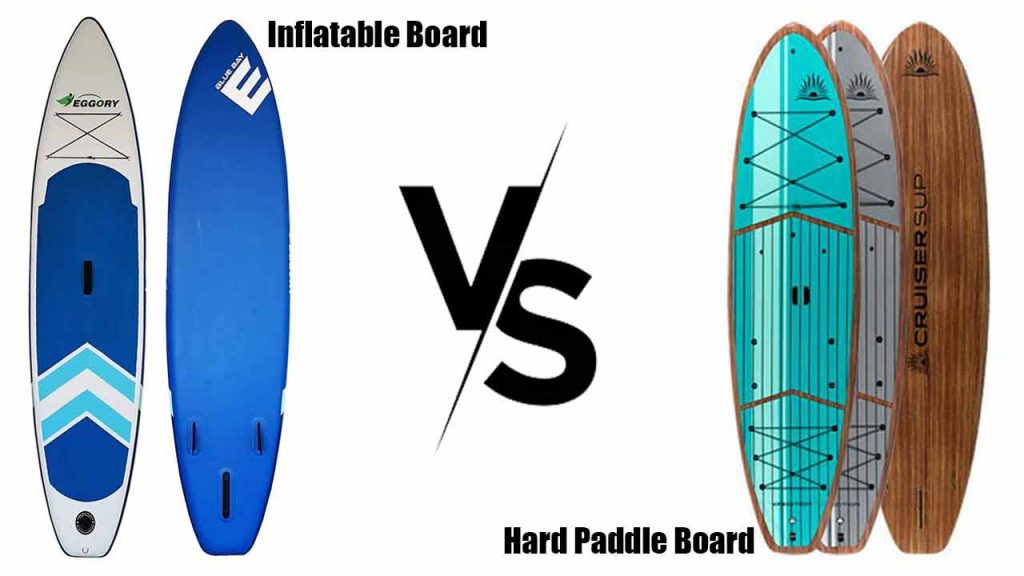
If you’re facing the difficulty of choosing the type of board to surf with, don’t worry anymore. The solution lies in knowing their differences.
Considerable Key Factors: Inflatable vs Hard Sup
Here are the factors to consider when making the decision between an inflatable vs hard sup.
1. Portability
When considering a paddle board inflatable vs solid by portability, inflatable board leads. Why is this so? An inflatable board is very easy to package and transport. You can deflate it and put them in bags. With this, you’ll not need a roof rack to move them from your home to the shore.
To convey hard paddle boards, you’ll need a sizable truck or SUV. This is because of their large size and rigidity. In fact, they’re very heavy and difficult to carry even from the car to the water.
2. Construction
Almost all inflatable sup boards come with small fibers on the sides. These small fibers tend to interlock forming a hard surface which you’ll notice when you fill it with air. Most brands can handle from 14 to 25psi. The outer surface of an inflatable board is made from rubber. Besides, the outer layers at the bottom and top are linked in the form of a rail to enhance the strength.
The hard paddle board has foam in the core. Besides, the foam are several layers of wood materials and fiberglass. Hard boards are larger than inflatables by volume and size. If you’re overweight, you’ll likely feel safer on a hard board than inflatables.
3. Storage
The size of your storage space will help you choose between an inflatable and a hard paddle board. The good thing about an inflatable one is that you can store it at any corner of your home. It is more suitable if you’re struggling with space.
Hard paddle boards are suitable for homes with a basement or garage. They are longer in size and need more room for storage. You may not consider buying it if you’re staying in a single room apartment.
4. Travel
When it comes to long distant vacations, an inflatable board is an ideal companion. Also, an inflatable board is like your normal luggage. They weigh about 30 to 40 pounds and are very easy to carry. You can keep it in bags in the trunk of your car and still have more space for other items.
It is a bit challenging to travel with a hard paddle board. Whether you’re going by air or car, you’ll feel the heat. Another thing is that you’ll need to install a roof rack in your vehicle. Besides, if you’ll be traveling through a construction area, you’ll need to insert your board in a protective bag. This will prevent it from being scratched by debris or rock. Don’t forget that you’ll pay more if you’re flying with a hard paddle board.
5. Durability
About durability between inflatable sup vs solid, we give it up to the inflatables. This is because of the recent advancement in inflatable technology. Now manufacturers can produce high-quality inflatables that aren’t vulnerable to scratches. Yet, if your inflatable drops on the ground, it’ll not scratch. With this, an inflatable is more suitable for paddling in rocky waters.
You should prevent your hard paddle board from hitting a hard surface. This often results in scratches or holes that are difficult to repair.
6. Performance
Performance is one of the areas where hard paddle boards outperform the inflatable ones. The fact is, solid boards have greater agility and glide. It can catch the waves with ease. So, if you intend to go on a distant surf or race, a hard paddle board is the best choice.
The rigidity of an inflatable is determined by the air pressure. You’ll likely experience drag in speed while maneuvering with inflatable sup. Yet, inflatables have a soft surface. This gives you a comfortable feel while you stand on it for long.
7. Repairs
Most inflatables on sale come with repair kits which you’ll seldom use. Inflatables are easier to repair especially if the hole is small. Besides, the rail experience less damage when it hits a rock in the water.
You should handle your solid board with care. This is because they’re more difficult to repair than inflatables. Also, hard paddle boards tend to scratch or dent easily.
Inflatable Paddle Board vs Hard: the Pros and Cons at a Glance
An inflatable paddle board has the following advantages (Pros)
- They’re very easy to carry and transport from one location to another.
- They’re the best companion if you’re on a distant journey by road or air.
- The surface feels soft and comfortable. You’ll not feel hurt even if you fall on it by accident.
- It is more suitable for beginners because of the ease of handling.
- It doesn’t take much storage space.
- They’re more durable.
An inflatable paddle board has the following disadvantages (Cons)
- It is a little difficult to maneuver an inflatable board.
- You’ll likely experience drag in speed and delay in response.
- It is not very rigid.
- Inflatable boards sink or sag in the middle.
- You’ll spend some time to inflate it at the shore before taking it to the water.
A hard paddle board has the following advantages (Pros)
- Their rigidity doesn’t depend on air pressure.
- They offer higher performance.
- They’re very responsive in the water.
- They’re more suitable for heavy riders.
- Hard paddle boards are better at catching waves.
A hard paddle board has the following disadvantages (Cons)
- It cost more to repair a hard paddle board.
- It takes much storage space.
- It’s heavy and difficult to carry. You’ll likely need help.
- It scratches more easily. It could break if it falls on a hard surface.
- Sometimes it may have difficult to transport over a long distance.
Conclusion
We hope that you’re satisfied with our today’s in-depth comparison. It is now your responsibility to decide which one is good for you. If you’re a beginner surfer, you may start with inflatable sup. As your skills improve, you may switch to a good quality solid board. Ensure that you shop for the product that will give you the greatest comfort and pleasure.

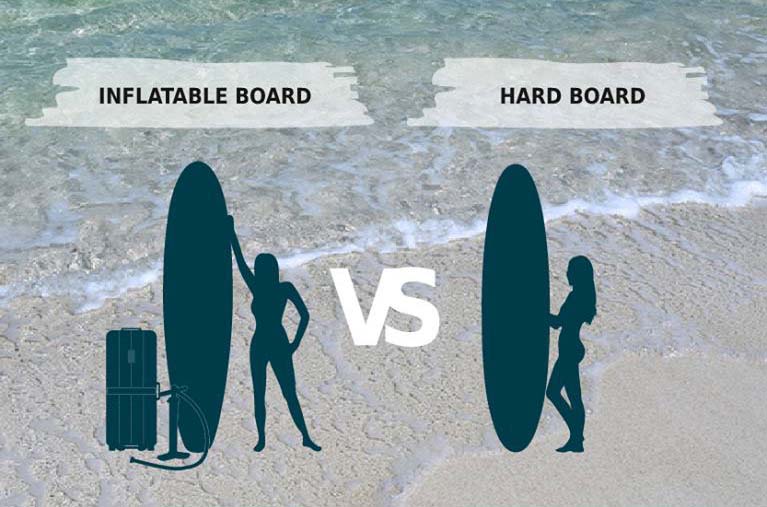
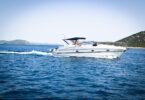

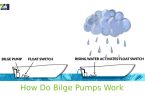

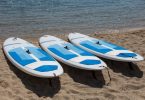

Leave a Comment